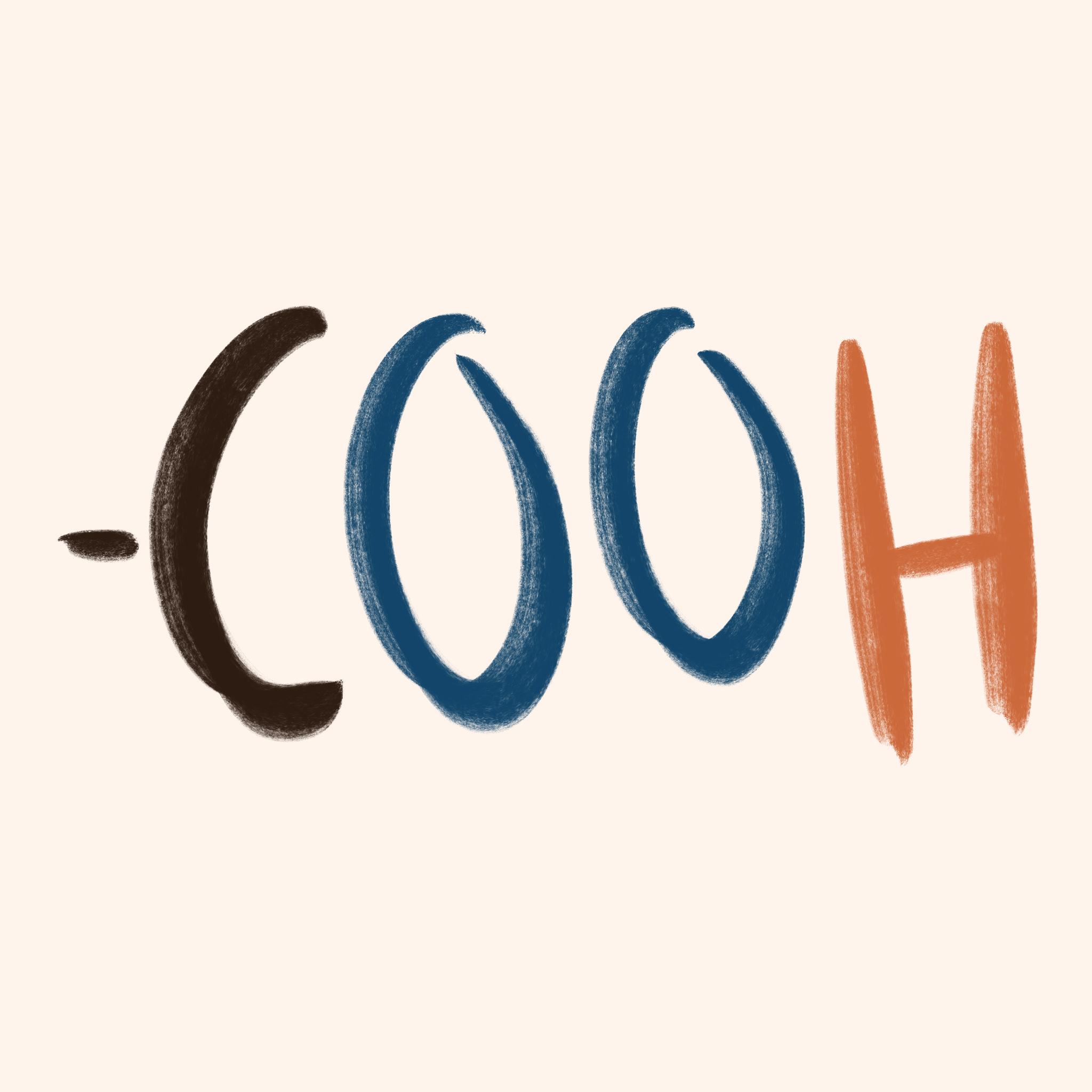Note: There’s a summary table at the end of this page.
Overview
Organic: Contains carbon
Hydrocarbons: Organic compounds made from hydrogen and carbon only
Homologous series: A series of compounds with the same functional group and similar chemical properties
Functional group: A part of a compound that indicates what homologous series it is a part of.
Carboxylic acids are an organic compound. They are not hydrocarbons because they also contain O (Oxygen). The functional group is COOH and it is always at the end of the compound. It cannot be in the middle. (This is because C has a limit of how many bonds it can have. See the structure section below.)

Eg. This is butanoic acid with the functional group highlighted
General formula
General formula for carboxylic acids: CnH2nO2
Each homologous series has its own general formula.
To use the general formula, replace n in the general formula with the number of C (carbon) atoms.
eg. A carboxylic acid compound with 3 carbon atoms:
CnH2nO2
= C(3)H2(3)O2
= C3H6O2
How to name Carboxylic acids
Every carboxylic acid has the format of “alkanoic acid”. Depending on the number of carbons, you just change the “alk” part:
1 – meth
2 – eth
3 – prop
4 – but
5 – pent
6 – hex
eg. A carboxylic acid compound with 2 carbon atoms: ethanoic acid
Here’s a trick I use to remember how each compounds starts:
(1) Monkeys (2) Eat (3) Peanut (4) Butter
5 & 6 are easy enough to remember because they are the same as shapes (pentagon, hexagon)
Displayed / structural formula
Important:
H (Hydrogen) has 1 bond
C (Carbon) has 4 bonds
O (Oxygen) has 2 bonds
(This will help you draw the structure)
Steps:
- Draw a chain with the correct number of C’s (carbons).
- Add an -OH at the end of the chain.
- Add a double bond O (=O) on the same carbon.
- Complete the molecule by adding H’s (hydrogens) around the C’s (carbons) to make each carbon have 4 bonds. REMEMBER TO COUNT THE DOUBLE BOND.
- Ensure that the lines are drawn in and that each letter has the correct number of bonds.
- You can check that the number of each element matches the formula.
Summary

Have any questions about this topic? Leave a comment below and I’ll get back to you 🙂






Leave a Reply